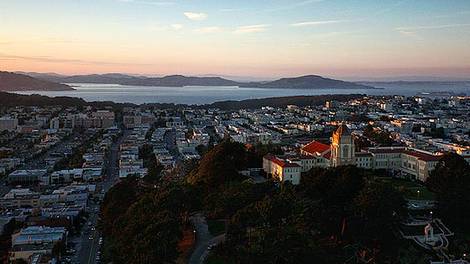
Special Issue
CRASE
Bright Future or Cautionary Tale? How the Bay Area Shapes the Future of the U.S.
Why Aren’t There More Female University Leaders?

California is a zone of female empowerment and endless potential. The San Francisco Bay Area, in particular, has produced some of the most influential women leaders in US politics. Senators Diane Feinstein and Kamala Harris and House Speaker Nancy Pelosi are representing California in Washington DC. Mayor London Breed is the first woman of color to lead San Francisco. The 2018 midterm elections suggest that female leadership is beginning to extend beyond California to other states. Will the national increase in women leaders be seen in higher education too?
The University of San Francisco (USF) may serve as an example now that over 50% of our leadership team is female and four out of six of our deans are women. USF may be echoing larger trends seen in higher education in California with more women leading across the state. The California State University system tipped over the 50% mark with their addition of a new female president at California State University Bakersfield and Janet Napolitano has been serving as the University of California president since 2013. While the business community lags behind academia in growth in female leadership, UC Berkeley Hass School of Business recently launched a new Center for Gender, Equity and Leadership to promote and empower current and emerging women leaders.
Although California leads the nation in gender equity in academic leadership, female university presidents have only slowly been increasing nationwide. Specifically, in 2016, only 30% of university presidents in the U.S. were women. Moreover, the number of women in the academic leadership pipeline is low. In 2014, only 38% of university chief academic officers of four-year institutions were women, which limits the potential pool of female candidates since most university presidents begin their careers as chief academic officers or provosts.
Women are also serving as presidents at less prestigious universities than their male counterparts. According to the American Council of Education (ACE) study, female presidents tend to work at two-year colleges that grant associate degrees (37%) versus research universities that grant doctoral degrees (8%). Two-year colleges are closer to gender equity—57% of chief academic officers in these institutions were women in 2014. Still, it is not clear that community colleges are stepping stones to the academic presidency in other institutions.
What factors are contributing to this slow growth in women academic leaders nationwide? The ACE survey of chief academic officers four years ago suggests that it is not lack of preparation. While women chief academic officers were less likely to consider being president of an academic institution (27% compared to 35% for men), they were more likely to actively train for the role through increased responsibilities, formal leadership programs, mentoring, and coaching. Female versus male leaders are also more likely to have a Ph.D. or an Ed.D., although their academic degrees are less likely to be in higher education. The answer is complicated by the fact that women typically experience a different pathway to University presidency than men. In fact, female presidents are more likely to be entering the presidency for the first time and as an interim placed there to “manage” the university during a transition, possibly in a higher education version of the “glass cliff” seen in business and politics. Female chief academic officers and provosts were also more likely to have worked their way through the ranks of their home institution before being hired to lead their college or university. If they are coming from another institutions, they are less likely to have been fully informed of the institutions challenges, including financial problems, during the hiring process.
In order for academic institutions to foster more female presidents, the role of the academic president and provost must be expanded to include the values and priorities of women leaders. For example, women are more likely to be more people-oriented leaders and to be balancing multiple roles. According to the ACE survey, almost a third of female academic presidents in 2016 had altered their career to take care of a loved one compared to 16% of male presidents. Female chief academic officers and provosts also tended to focus their efforts on developing the classroom learning environment and improving student learning and success (67% versus 51%) in comparison to male leaders.
As the number of female presidents and provosts continues to grow in California colleges and universities, academic institutions nationwide need to broaden how they support and evaluate the expertise and experience of a new generation of academic leaders. California may serve as an important example or how to encourage and pursue gender equity in higher education.
 Shirley McGuire is Senior Vice Provost of Academic Affairs and Professor of Psychology. Dr. McGuire earned her Ph.D. in Human Development and Family Studies from The Pennsylvania State University. Her research focuses on the links between social and personality development and family dynamics.
Shirley McGuire is Senior Vice Provost of Academic Affairs and Professor of Psychology. Dr. McGuire earned her Ph.D. in Human Development and Family Studies from The Pennsylvania State University. Her research focuses on the links between social and personality development and family dynamics.